By midsummer many of our native wildflowers have finished flowering and are beginning to look tired. It’s time to take action. In this article we’re looking at when to cut your wildflower meadow.
In the UK, a perennial wildflower meadow area can loosely be described as a mixture of native perennial flowering plants and grasses growing together in a sustainable plant community”. At least that’s what we’ve tried to achieve with each type of Meadowmat.
I’m writing this piece in mid-July. Judging by my own mini-meadow which was created seven summers ago using Traditional Meadowmat, it’s time to think about cutting back the vegetation. Here’s how to decide when to cut your wildflower meadow.
When to cut – Understanding the seasonal changes in your meadow
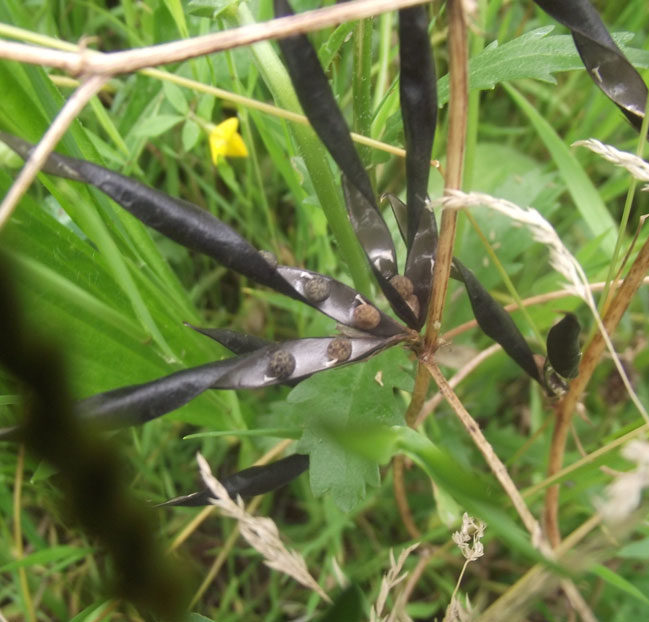
The natural growth habit of the plants means that your meadow area should be lush and green through springtime and early summer. Depending on which flowering species are present, you should see blooms throughout this time – maybe as a gentle dappling of flowers distributed through the months, sometimes as one big spectacular burst of colour that lasts just a few weeks.
Once the plants have flowered, they will divert some of their energy from their foliage into setting seed. Reproducing is the one thing that plants live for. They don’t have careers or aspirations for a better quality of life, they just want to secure the future for their species. Making sure the seed ripens rather than rots is important to them. So the majority of native perennial flowering plants will develop and ripen their seeds in the summer months when there is plenty of sunshine.
How does the plant’s reproductive cycle affect meadow management?
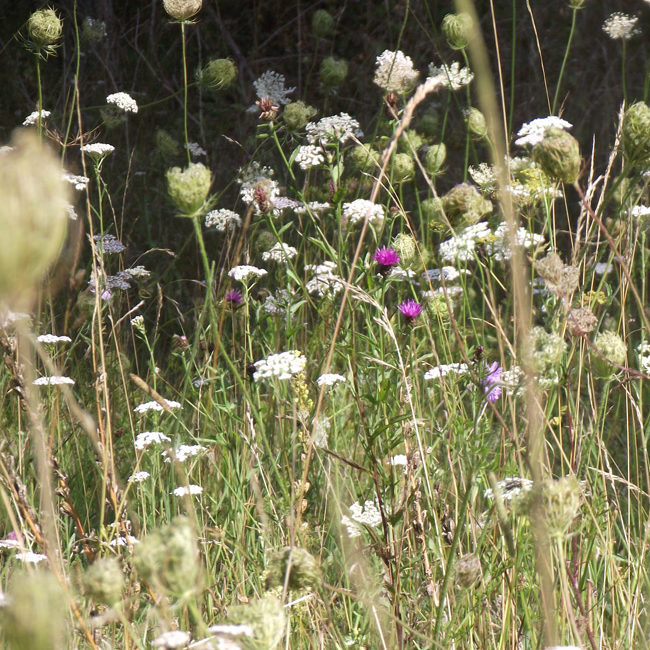
This is my mini-meadow pictured in July. In this part of the area, I’ve got wild carrot just beginning to bloom, some knapweed, mallow and some yarrow. The grasses, however, are beginning to look dry and past their best. In other parts of the mini-meadow, the plants have collapsed so I need to decide when to cut the wildflower meadow
In a traditional hay meadow, the plants are mown down and dried to create animal feed. Naturally, farmers want the winter feed for their creatures to be as nutritious as possible so the time the hay cut for when the seeds have set but have not yet dropped. That usually happens in June.
As gardeners though, we’re growing a wildflower meadow for a different reason. We want an attractive area that’s great for wildlife. So we need to manage the area, not for food, but to maximise the benefits we’re after.
A decorative Meadowmat wildflower area would normally be mown a little later in the year that farmers cut their hay. What does that mean to the gardener? It means that you’re allowing the plants to complete their reproductive cycle and therefore you will see more mature seed-heads and you may see more spent foliage.
When to cut – At what point should you mow your meadow?
There is no set date for mowing a wildflower meadow that is being grown for its looks. If it was created using Meadowmat or something similar, most of the species in there will be perennial. That means they live for two or more years (usually more). If you do trim those plants, provided they have a healthy and well-established root system they will continue to grow – you won’t kill them.
Each of the species in Meadowmat has a slightly different flowering time. The species mix and the flowering times will be different for every meadow area and for every season. It’s in a constant state of flux so it’s impossible to state a date. That’s for you, the gardener to decide using your eyes and your instincts.
If your meadow is too grassy
Meadow management is all about controlling the proportion of grass to flowering plants. Given the opportunity, grass will crowd out all but the toughest wildflowers and you’ll end up with a shaggy lawn. This is a big problem on fertile soils.
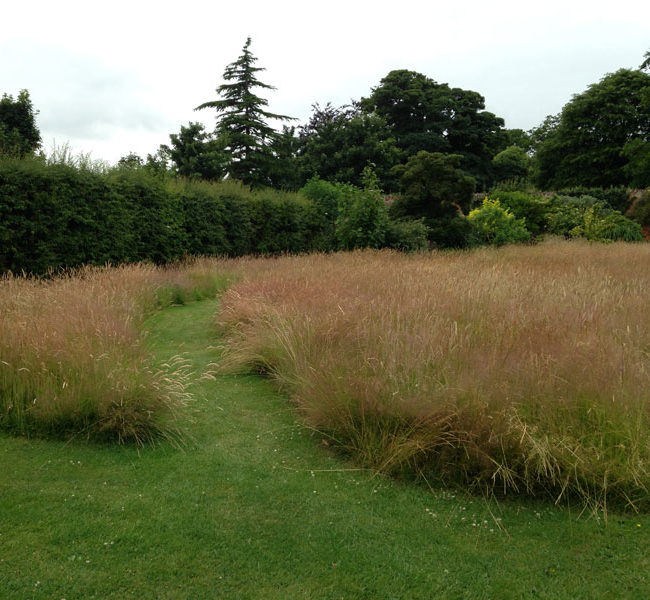
At Felbrigge Hall near Cromer in Norfolk, formal lawns have been allowed to grow longer. Not only does this reduce maintenance costs, but these areas were also teeming with Meadow Brown butterflies when I visited in July. Sadly most of the wildflowers had finished blooming but the mown paths, the different textures and the colour and movement were stunning. If you feel there is too much grass in your wild meadow area, you need to cut it back before it can set seed. Which may mean you sacrifice some of the flowers.
Control grass by cutting back in June – before it gets too rampant.
Of course, if you have a relatively small meadow area, you can use garden shears to cut the grasses back without trimming the flowering plants. It’s time-consuming but quite relaxing.
If everything falls over
Mother Nature has a different set of challenges for the gardener ever year. Some years, everything in the meadow will grow like billion in spring and then come summer, it all collapses and falls in on itself. Of course in the herbaceous border, you would have staked plants to stop that happening. Meadows aren’t like that. The only thing you can do in this case it cut back the collapsed vegetation and remove it. If you leave it all lying on the ground, small plants will be deprived of light and will die out only to be replaced by grass.
If you want to extend the flowering period into autumn
By midsummer, all of the Meadowmat types will be changing their appearance. The grasses will have set seed and they will have turned a beautiful golden honey colour. Some of the flowering plants will still be looking lovely and in full bloom.
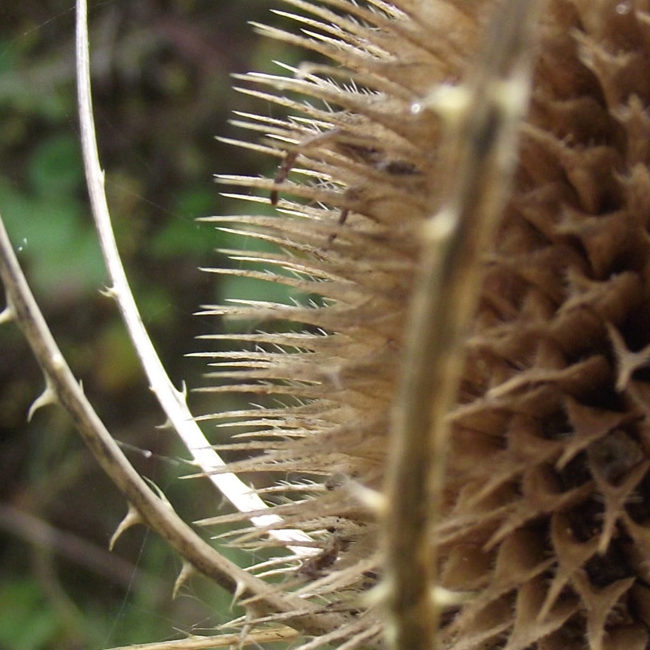
I adore the detail on seed heads like this teasel – but the only way to be sure of seeing them in your garden during autumn and winter is to delay mowing your meadow
Personally, I love that look – but only if the foliage is still standing. If everything is still to my liking, I leave it be and let the later flowering species – the autumn Hawkbits etc do their thing. Should the occasional plant collapse I’ll trim it back and leave everything else alone. If the whole lot falls over and looks ugly – then the whole lot gets trimmed and if I’m lucky, some of the autumn flowering species will carry on regardless.
When to cut your wildflower meadow – Using your instincts as a gardener
Not everyone is confident in their gardening ability. That’s OK. It’s like first time parenting – you get handed this complex and ever-changing creature which doesn’t have a manual. But as time goes by you will learn to listen to your instincts and do what you feel is right. Mother Nature doesn’t live by the rule book and in this case, you don’t have to either. If your perennial wildflower area looks as though it needs cutting – don’t worry about the calendar – cut it.
You may also enjoy
Growing yellow rattle, the natural way to suppress grasses in a wildflower area
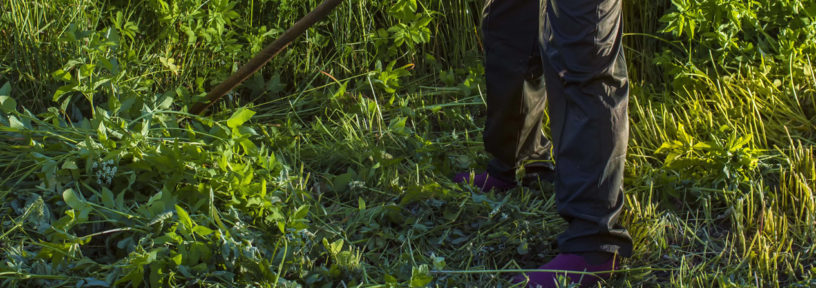
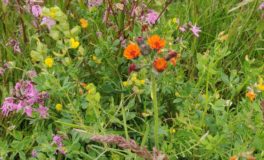 Caring for your new Meadowmat wildflower turf
Caring for your new Meadowmat wildflower turf  Mowing your lawn for the first time
Mowing your lawn for the first time 

